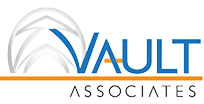When SAY and DO Don’t Line Up
 I once worked with a leader who had gotten feedback that her team felt she didn’t have trust in them; she tended to steamroll her own solutions without listening to their inputs.
I once worked with a leader who had gotten feedback that her team felt she didn’t have trust in them; she tended to steamroll her own solutions without listening to their inputs.
While the solutions she came up with generally worked, the rest of the team felt disconnected with the outcome. Over time they clammed up on giving their opinion, knowing that she would step in with her own solution anyway. The team became disengaged and turnover rate grew.
That was not what this leader intended, of course. She had always envisioned the role of a leader as engaging the team to bring out their best. She offered solutions, she said, because it seemed the most efficient way to get things done, letting her team get to other important work. There was a disconnect between her desire to engage her team to find the best solutions and what her behavior portrayed.
This leader chose “Collaborative” as a leadership presence she wanted to manifest. In her mind, she thought that’s how she was being. Her behaviors reflected something different.
What did she do to practice “collaborative” into action?
First, a small step. She made a practice of saying hello or at least make eye contact with a smile with whoever she passed in the hallway (this was pre-Covid times). She admitted she was often so distracted she didn’t acknowledge others.
Second, she asked everyone to show up for meetings 10 minutes earlier so they could socially check-in with each other and they would all put away other work/devices while they were meeting. Previously, she—and others—had a pattern of showing up late and distracted to meetings.
Lastly, she agreed to go last in the meeting. Previously, she launched the meeting with her interpretation of the problem, followed by “here’s what I was thinking…” and then, “what are your questions or comments?” Rarely getting questions or comments reinforced her view that she had done the team a service and saved them time by coming up with a solution.
She experimented with changing the structure of the meeting. Different members of the team took turns at presenting the problem issues. Then each team member was asked to say something about it. She agreed to not say anything until the end.
This was the hardest. It wasn’t enough to just go last in the discussion. She also had to shift her mindset from “I know the answer” (which resulted in impatient or dismissive body language) to “I’m curious about these other answers.” We worked on questions that showed curiosity, like, “and tell me how that might work?”
The side effect of this practice was an immense weight lifted from her shoulders. She had gotten to where she was today by doing her homework, being right, having the answer. She put huge pressure on herself to live up to these self-imposed expectations.
Her intention was to be collaborative yet without deliberate behavior practices to support that, her conditioned tendency drove her towards what she knew had ‘worked’ for her–having the ‘right’ answer. With these practices, she found that by working together she and her team could come up with good solutions. She began to view her role differently. She did not have to have the answers; she needed a way to get the best answers.
Where are you noticing your Intention is disconnected from your Action?
Photo by Anne Nygård on Unsplash
You may also like

The “Art” of Making Mistakes
- November 17, 2021
- by vaultassociates
- in Blog

“I Feel Your Pain…” -– the role of Empathy in Leadership

